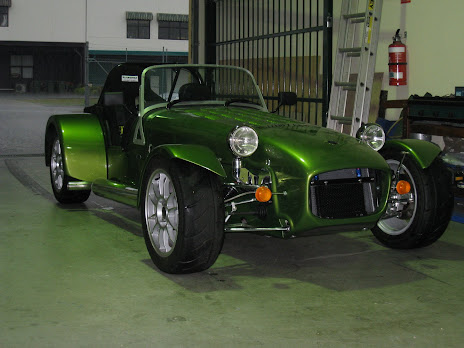With a dearth of interesting things to write about, I thought maybe a short piece on all the toys I have coming over from the UK might be in order.
As per a previous post, you can take a perfectly good engine and turn it into a complete monster, as long as you have enough money. Now I don’t, and I also want a car that I can still drive, rather than some 300 bhp beast that scares the hell out of me. So I’ve gone for a package of items that should take the car to 220bhp or thereabouts.
But what do you need to achieve this? The shopping list for my 2.0L Duratec is as follows:
- Direct to Head Throttle Bodies – these replace the standard air intakes with individual trumpets. This means that each cylinder will have less trouble breathing, leading to more power and a better power curve. Comes with mounting kits etc.
- 220bhp Cams with verniers – simply, these determine the timing and lift of the valves on top of the engine, leading to better breathing / exhaust etc. Also putting in uprated valve spring sets.
- OMEX 600 Series ECU – the brains of the car, giving good flexibility in terms of things like fuel ratios, timing advance, redline etc etc.
- Wet Sump kit – this takes a few centimetres off the bottom of the car, adding to the clearance. If you look at a clubman from down low, you’ll nearly always see the engine protruding underneath. With such a low car, this is an invitation to smack into anything slightly taller than a leaf. A low speeds (like speedbumps) you can get away with it, but hit something at speed and you’re asking for broken engine mounts, cracked sumps, and spectacular repair bills. It will also help with the 100mm ADR ground clearance requirements.
- AP Lightweight flywheel and clutch – the flywheel sits on the engine transmission, and is the thing that ensure when you put your foot on the clutch (and off the accelerator) the engine revs don’t just stop. The flywheel contains kinetic energy that keeps the engine spinning. Of course, you need the engine to put the energy in there in the first place, so a heavy flywheel saps power during acceleration. A light weight flywheel means it takes less energy to spin up, to you go faster. The theory is that hills etc will cause a problem (the flywheel contributes it’s energy to help you climb under load), but the Birkin weighs nothing, so doesn’t need that. The clutch is an AP racing model, again lighter weight for similar reasons.
There are other things that need to come along with this stuff – bolts, water rails, fuel rails etc that are either there because they have to be or because they look pretty.
Another point that’s sometimes not mentioned is that with more aggressive cams you need to pocket the pistons – essentially each piston needs a groove ground out of the top in order to allow the cams to turn, otherwise they’ll foul with all sorts of exciting results. And if the pistons come out, you may as well key the crank, and if you do that you may as well port and polish the head – so it’s a minor rebuild. But the idea is that the engine will be not only powerful but strong. I’m not keen on the idea of a highly strung engine that needs a rebuild every 10K. I also don’t like the idea of the crank letting go and destroying the engine block, as it’s aluminium and when they break, it’s a new engine.
So the engine package I’ve opted for should provide a nice, smooth power band with as much power and torque as I could possibly ask for, whilst still remaining reliable and tractable. Truly an everyday supercar.
As an aside, I went to Crown Casino the other day and saw they had a Ferrari exhibition. They had an F40 on a stand, and whilst it’s top speed was far beyond what the Birkin can achieve (without dropping it off a cliff), I took a great deal of pleasure knowing I’ll get to 100 faster than it will.
Now all I need to do is find myself up against one at the lights……


No comments:
Post a Comment